Second Turkic Khaganate
| ||||||||||||||||||||||||||||||||||||||||||||||||||||||||||||||||||||||||||||||||||||||||||||||||||||||||||||||||||||||||||||||||||||||||||||||||||||
Read other articles:

Questa voce sugli argomenti calciatori tedeschi e calciatori turchi è solo un abbozzo. Contribuisci a migliorarla secondo le convenzioni di Wikipedia. Segui i suggerimenti dei progetti di riferimento 1, 2. Onur Ayık Nazionalità Germania Turchia Calcio Ruolo Attaccante Squadra Ümraniyespor Carriera Giovanili 1995-2004 Viktoria Rethem2004-2009 Werder Brema Squadre di club1 2008-2012 Werder Brema II67 (12)2010-2012 Werder Brema2 (0)2012-2013 Oberneuland…

Graphviz Informations Développé par John Ellson, Emden Gansner, Yehuda Koren, Eleftherios Koutsofios, John Mocenigo, Stephen North, Gordon Woodhull, David Dobkin, Vladimir Alexiev, Bruce Lilly, Jeroen Scheerder, Daniel Richard G., Glen Low Dernière version 10.0.1 (11 février 2024)[1] Dépôt gitlab.com/graphviz/graphviz Écrit en C Interface Tk Système d'exploitation Linux Environnement GNU/Linux, macOS, Unix, Windows Formats lus DOT Type Logiciel de manipulation et de visualisation de grap…
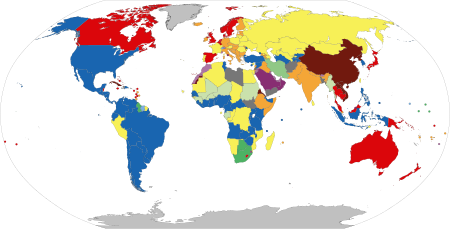
Form of government Part of the Politics seriesRepublicanism Concepts Anti-monarchism Democracy Democratization Liberty as non-domination Popular sovereignty Republic Res publica Social contract Schools Classical Modern Federal Kemalism Nasserism Neo-republicanism Venizelism Types Autonomous Capitalist Christian Democratic Federal Federal parliamentary Islamic Parliamentary People's Revolutionary Secular Sister Soviet Philosophers Arendt Cicero Harrington Jefferson Locke Machiavelli Madison Mazzi…

ECOSOCC redirects here. Not to be confused with ECOSOC. This article relies excessively on references to primary sources. Please improve this article by adding secondary or tertiary sources. Find sources: Economic, Social and Cultural Council – news · newspapers · books · scholar · JSTOR (July 2010) (Learn how and when to remove this template message) Politics of the African Union Institutions Casablanca Group Union of African States Organisation of Afric…

Шалфей обыкновенный Научная классификация Домен:ЭукариотыЦарство:РастенияКлада:Цветковые растенияКлада:ЭвдикотыКлада:СуперастеридыКлада:АстеридыКлада:ЛамиидыПорядок:ЯсноткоцветныеСемейство:ЯснотковыеРод:ШалфейВид:Шалфей обыкновенный Международное научное назва…
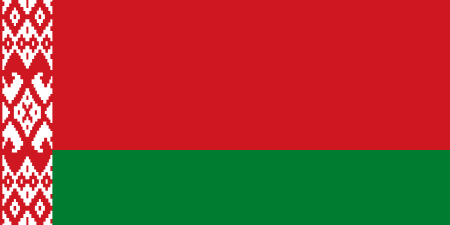
Roue tourangelle 2013GénéralitésCourse 12e Roue tourangelleCompétition UCI Europe Tour 2013Date 21 avril 2013Distance 195 kmPays traversé(s) FranceLieu de départ Beaumont-en-VéronLieu d'arrivée ToursVitesse moyenne 43,142 km/hRésultatsVainqueur Mickaël DelageDeuxième Benjamin GiraudTroisième Yauheni HutarovitchRoue tourangelle 2012Roue tourangelle 2014modifier - modifier le code - modifier Wikidata La 12e édition de la Roue tourangelle a eu le 21 avril 2013. La course…

Lethal Weapon 2Poster rilis layar lebarSutradaraRichard DonnerProduserRichard DonnerJoel SilverSkenarioJeffrey BoamCerita Shane Black Warren Murphy BerdasarkanPara karakteroleh Shane BlackPemeran Mel Gibson Danny Glover Joe Pesci Joss Ackland Derrick O'Connor Patsy Kensit Penata musik Michael Kamen Eric Clapton David Sanborn SinematograferStephen GoldblattPenyuntingStuart BairdPerusahaanproduksiSilver PicturesDistributorWarner Bros.Tanggal rilis 7 Juli 1989 (1989-07-07) Durasi114 meni…

Ця стаття потребує додаткових посилань на джерела для поліпшення її перевірності. Будь ласка, допоможіть удосконалити цю статтю, додавши посилання на надійні (авторитетні) джерела. Зверніться на сторінку обговорення за поясненнями та допоможіть виправити недоліки. Матер…
2020年夏季奥林匹克运动会波兰代表團波兰国旗IOC編碼POLNOC波蘭奧林匹克委員會網站olimpijski.pl(英文)(波兰文)2020年夏季奥林匹克运动会(東京)2021年7月23日至8月8日(受2019冠状病毒病疫情影响推迟,但仍保留原定名称)運動員206參賽項目24个大项旗手开幕式:帕维尔·科热尼奥夫斯基(游泳)和马娅·沃什乔夫斯卡(自行车)[1]闭幕式:卡罗利娜·纳亚(皮划艇)[2…
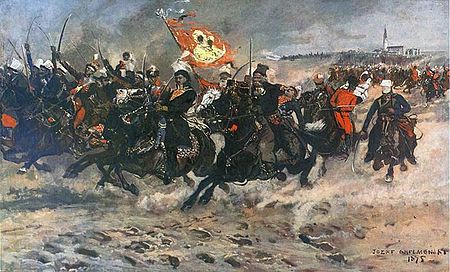
Primera partición de Polonia Partición polaco-lituana de la Commonwealth después de la Primera Partición como protectorado del Imperio ruso (1773–1789)Pérdidas de poblaciónA Prusia 580 000[1]A Austria 2 650 000A Rusia 1 300 000Pérdidas territorialesA Prusia 36 000 km²A Austria 83 000 km²A Rusia 92 000 km² LocalizaciónPaís República de las Dos NacionesDatos generalesTipo aspecto de la historiaSuceso Primera reparto territorial de…
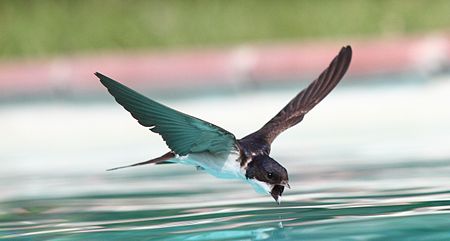
Tindakan minum yang digambarkan dalam patung—sosok didalam patung menggunakan kantung minum tradisional Video gerak lambat kucing menjilat air Seekor Jack Russell Terrier yang sedang minum air dari gelas. Burung yang sedang minum sambil terbang Aktivitas minum dapat diamati pada banyak spesies serangga.[1] Minum adalah tindakan menelan air atau cairan lain ke dalam tubuh melalui mulut, belalai, atau melalui organ tubuh lain. Manusia minum dengan menelan dan memanfaatkan gerak peristalt…

Military term This article is about a military term. For the game, see Half-Life: Opposing Force. The term opposing force is occasionally used to refer to a genuine military foe. This article is concerned only with its use in simulated conflict. This article needs additional citations for verification. Please help improve this article by adding citations to reliable sources. Unsourced material may be challenged and removed.Find sources: Opposing force – news · newspapers&#…

Stadium in Mildenhall, Suffolk Mildenhall Stadium Suffolk DownsThe speedway trackLocationHayland Drove, West Row, IP28 8QUCoordinates52°22′07″N 0°25′49″E / 52.36861°N 0.43028°E / 52.36861; 0.43028Opened1971TenantsSpeedway Stock car racing greyhound racing Mildenhall Stadium is a speedway, stock car racing and Greyhound Board of Great Britain regulated greyhound racing venue located in Mildenhall, Suffolk between Cambridge and Norwich.[1] The stadium is…

Den här artikeln behöver källhänvisningar för att kunna verifieras. (2018-07) Åtgärda genom att lägga till pålitliga källor (gärna som fotnoter). Uppgifter utan källhänvisning kan ifrågasättas och tas bort utan att det behöver diskuteras på diskussionssidan. Karta över kommunerna i Albanien. Kommuner (albanska: bashki) är den andra högsta administrativa indelningen i Albanien efter de tolv prefekturerna. Före 2015, fanns det 373 kommuner av två olika typer: kommuner med en …

乔冠华 中华人民共和国外交部部长 中国人民对外友好协会顾问 任期1974年11月—1976年12月总理周恩来 → 华国锋前任姬鹏飞继任黄华 个人资料性别男出生(1913-03-28)1913年3月28日 中華民國江蘇省盐城县逝世1983年9月22日(1983歲—09—22)(70歲) 中华人民共和国北京市籍贯江蘇鹽城国籍 中华人民共和国政党 中国共产党配偶明仁(1940年病逝) 龚澎(1970年病逝) 章含之�…

Official sign language of Sweden You can help expand this article with text translated from the corresponding article in Swedish. (January 2015) Click [show] for important translation instructions. Machine translation, like DeepL or Google Translate, is a useful starting point for translations, but translators must revise errors as necessary and confirm that the translation is accurate, rather than simply copy-pasting machine-translated text into the English Wikipedia. Consider adding a top…

提示:此条目页的主题不是中苏航空公司。 中苏民航СКОГА藏于民航博物馆(俄语:Китайский музей гражданской авиации)的中苏民航徽章 IATA ICAO 呼号 - - СКОГА/中苏民航 創立於1950年7月1日開始營運1950終止运营1954年12月31日營運基地 北京西郊机场 机队数量里苏诺夫Li-2伊尔-12总部 中国北京 中苏民用航空股份公司(俄語:Советско-китай…

Sports season2018–19 Atlantic Coast Conference men's basketball seasonLeagueNCAA Division ISportBasketballNumber of teams15TV partner(s)ACC Network, ESPN, Raycom Sports, Regional Sports Networks, CBSRegular seasonFirst place (tie)Virginia (16–2), North Carolina (16–2)Season MVPZion Williamson, DukeACC tournamentChampionsDukeFinals MVPZion Williamson – DukeAtlantic Coast Conference men's basketball seasons← 2017–182019–20 → 2018–19 ACC men's basketball standings vte Co…

The Politics of Aberdeen, Scotland have changed significantly in recent years. In 1996, under the Local Government etc. (Scotland) Act 1994, Grampian Regional Council and Aberdeen District Council were dissolved, creating the new unitary Aberdeen City Council to represent the city's council area. Aberdeen City Council See also: Category:Aberdeen City Council elections Aberdeen City Council represents the Aberdeen City council area of Scotland. Aberdeen City Council currently comprises forty-five…

新加坡货运航空Singapore Airlines Cargo IATA ICAO 呼号 SQ SQC SINCARGO 創立於2001年7月1日 ( 2018年與新加坡航空合併後停運 )樞紐機場樟宜機場沙迦國際機場布魯塞爾機場次要樞紐機場阿姆斯特丹史基浦機場航空聯盟WOW货运联盟机队数量7通航城市19[1]母公司新加坡航空总部新加坡重要人物吴俊鹏(首席執行官)[2]陈有成(董事長)网站www.siacargo.com 新加坡货运航空或新加坡航空�…









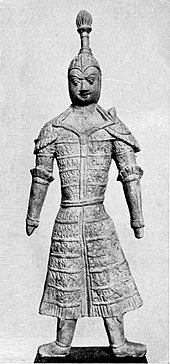
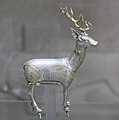


![Gold belt ornaments, Tonyukuk ritual place, Tov, Erdene.[30]](http://upload.wikimedia.org/wikipedia/commons/thumb/4/4a/Turkic_Gold_Belt_Ornaments_%2835671983336%29.jpg/120px-Turkic_Gold_Belt_Ornaments_%2835671983336%29.jpg)
